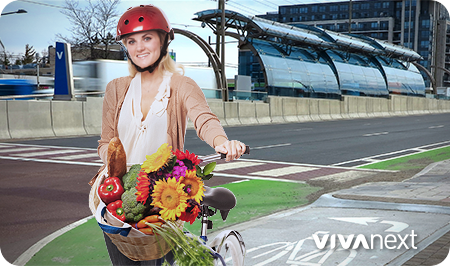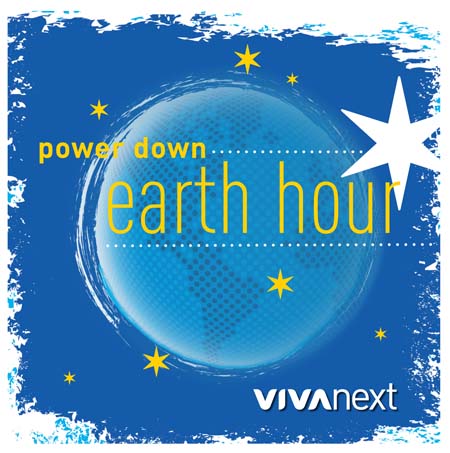The sight of summer weather means more people are getting outside and being active, ditching their winter tires for bicycle tires. Cyclists make up a large percentage of commuters so ensuring their safety, as well as the safety of other motorists and pedestrians, is important in creating convenient and cohesive road systems. Biking is as a healthy, more environmentally friendly way to get around, and the vivaNext corridors are helping to facilitate this.
As part of the Highway 7 East rapidway, bike boxes and dedicated bike lanes are being implemented along the corridor. Bike boxes allow cyclists to avoid crossing three lanes of busy traffic to reach the left-turn lanes, and act as a safe, designated waiting area. With the installation of these bike boxes, the temporary condition of restricting motorists from making a right-turn movement at intersections has been removed. Motorists are now able to make right turns at red lights on Highway 7 at all intersections.
Dedicated bike lanes also mean cyclists have these lanes all to themselves and are not sharing at any point with other vehicles. They are painted a high-contrast green in the areas around the intersections, with specific bike lane markings to clearly identify them in the mid-block areas. Following the established safety standards, bike lanes are designed at 1.4 metres wide, with an additional half metre for a buffer zone between the bike and traffic lanes.
For cyclists, motorists, and pedestrians, sharing the road is becoming increasingly difficult in dense urban centres. But, the installation of bike lanes is proving to be a great alternative to our congested roads and improving air quality. Also, cyclists can enjoy the benefits of bike racks on transit during longer commutes, which eases the bike-to-bus transition and helps with mobility. You can read more about the benefits of bike lanes in a recent article from the Toronto Star. Following the rules of the road and respecting all commuters in the process can be a positive experience, so get out and get cycling!










